In recent times, Reading F.C. has been navigating a tumultuous period marked by financial troubles that have led to disciplinary hearings for the Berkshire-based club.
The situation is equally challenging on the pitch, as the team suffered relegation from the EFL Championship last season.
The relegation was compounded by a points deduction, without which Reading would have avoided the drop.
Presently, the Royals are situated at the bottom of the League One table, facing another points deduction due to the ongoing financial issues.
Reading recently experienced a positive development as their academy regained Category One status, having been demoted earlier.
The Royals’ academy is known for producing immensely talented players.
A prime example is Michael Olise, who currently plies his trade for the Premier League club Crystal Palace.
Additionally, players like Danny Loader, now with Porto, and Ethan Bristow, currently active in the MLS, further highlight the success of Reading’s esteemed youth system.
Suppose the club successfully addresses its financial issues.
In that case, there might be a need to turn to academy prospects soon, particularly with the looming possibility of relegation to League Two.
In this tactical analysis, we will conduct a comprehensive Shay Spencer scout report, examining one of the most promising youth prospects currently emerging from Reading’s esteemed academy.
This young talent could potentially join the ranks of Coniah Boyce-Clark and Kelvin Ehibhatiomhan in the first team.
This scout report focuses on Shay Spencer, a defensive and central midfielder who has impressed for Reading at Under 21 and Under 18 levels this season.
We will
examine how he fits into Reading’s tactics at theyouth level and what he could potentially bring to the first team.
Shay Spencer’s Style Of Play
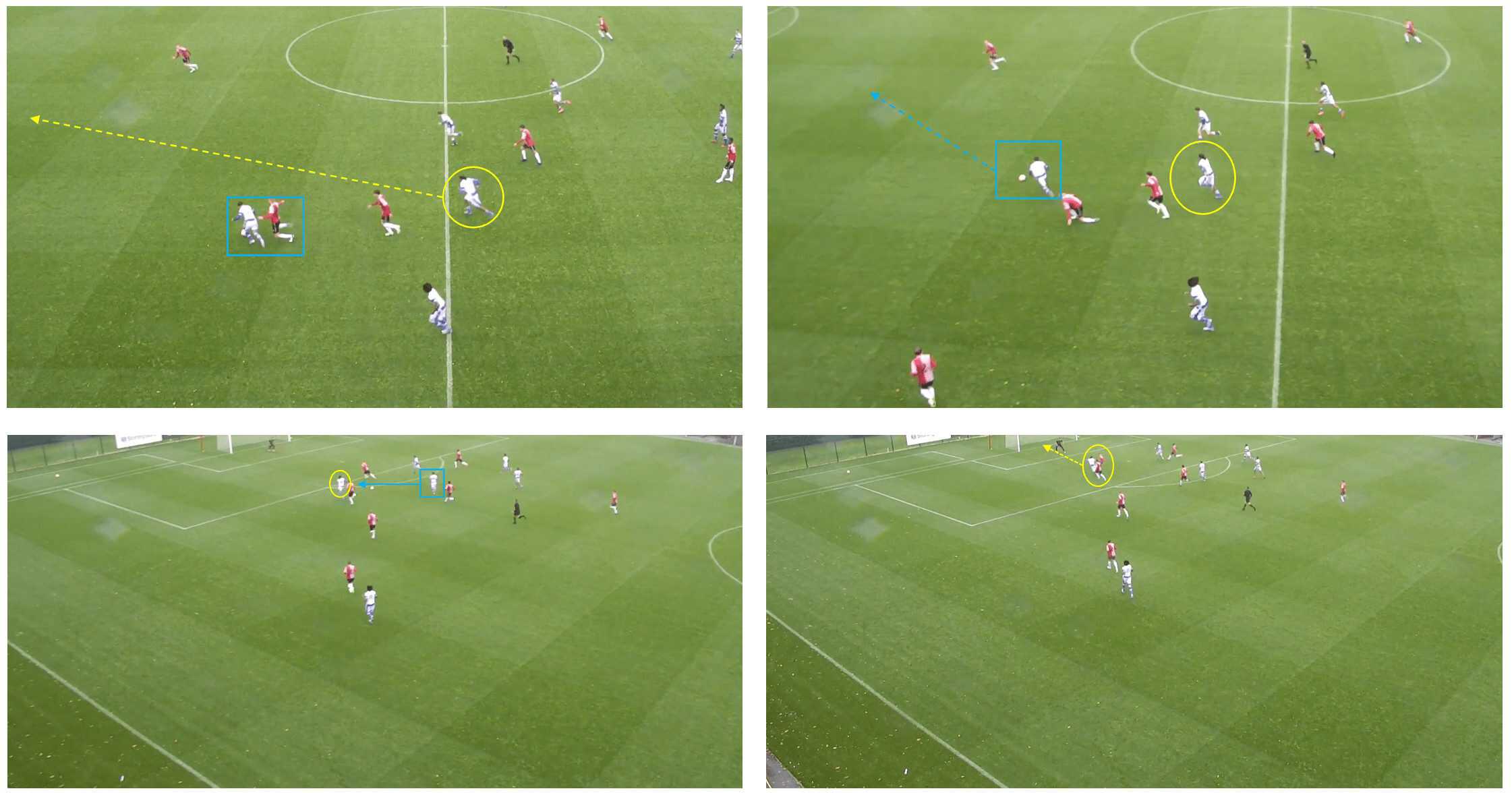
As a defensive midfielder, Spencer is expected to excel in his defensive contributions, which he does.
However, to begin this analysis, we are going to highlight how well the 17-year-old does when Reading are on the attack.
The example above is taken from a recent under-18 game against Southampton.
We can see that Reading forces a turnover as the Saints are trying to build an attack.
Upon seeing his teammate regain possession, Spencer’s instinct is to drive forward.
As his teammate carries the ball forward, the defensive midfielder continues his run into the space available.
He receives a pass into his path, which he calmly places beyond the goalkeeper.
Moreover, Shay Spencer’s style of play in the attacking phase certainly adds an element of unpredictability to the team’s play.
When he makes these well-timed forward runs, it catches opponents off guard, disrupting their defensive structure.
This proves to be very useful in allowing Reading to capitalise on turnovers high up the pitch and quickly transition from defence to attack.
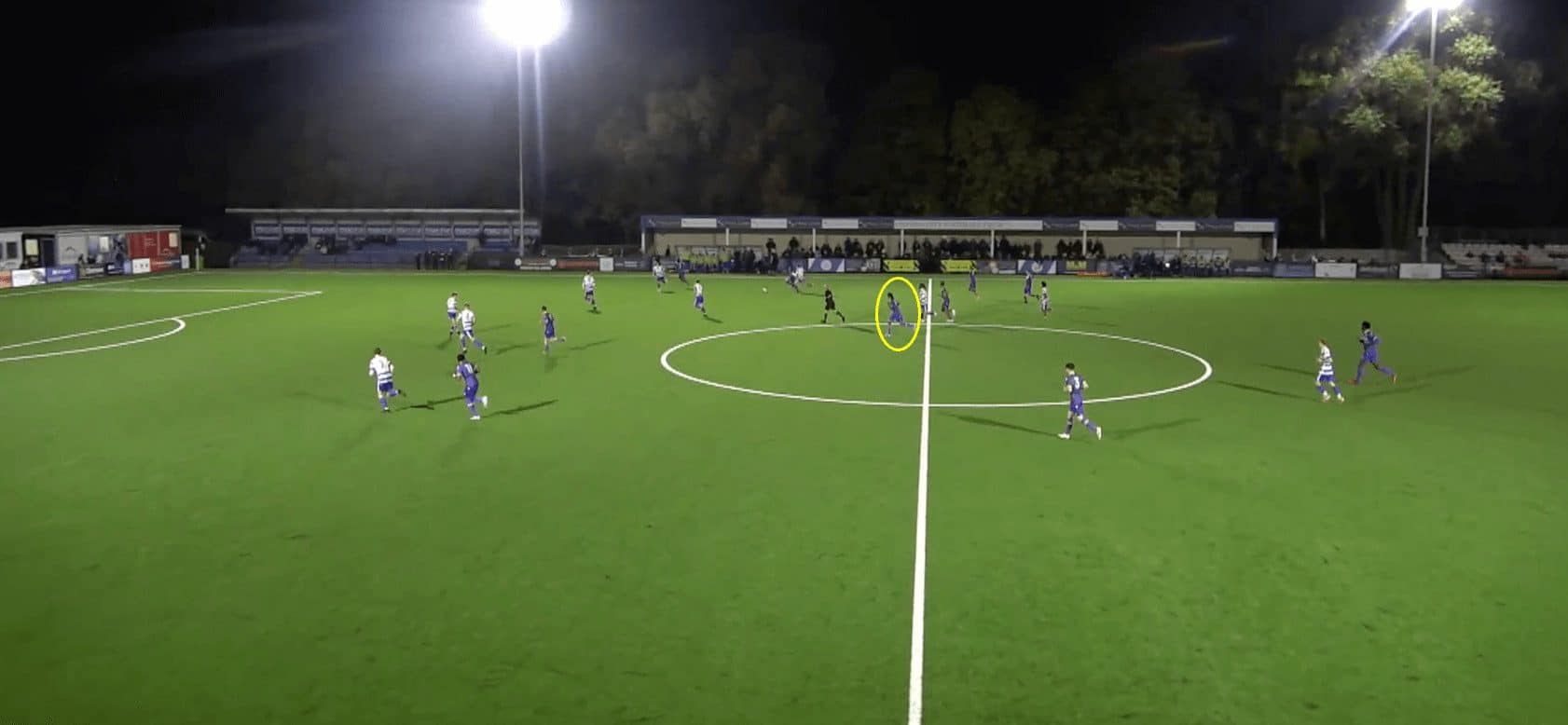
Another example of Spencer making a well-timed run into the opposition penalty area can be seen here.
He has an excellent athletic ability, allowing him to run from box to box for 90 minutes.
In this scenario, he arrives in perfect time to pass the ball into the net after making the run from the edge of his own penalty area.
These offensive contributions also provide an extra layer of support to the team’s forwards.
By venturing forward, Spencer creates numerical superiority in the attacking third, potentially overwhelming opposing defences or catching them off guard.
This additional attacking presence also allows for more intricate build-up play, as he has the opportunity to link up with other midfielders and forwards, creating a cohesive attacking unit.
Shay Spencer Composure under pressure
A defensive or central midfielder needs to be able to remain composed on the ball and navigate through opposition pressure.
This skill can contribute significantly to the team’s overall performance, impacting both defensive stability and offensive transitions.
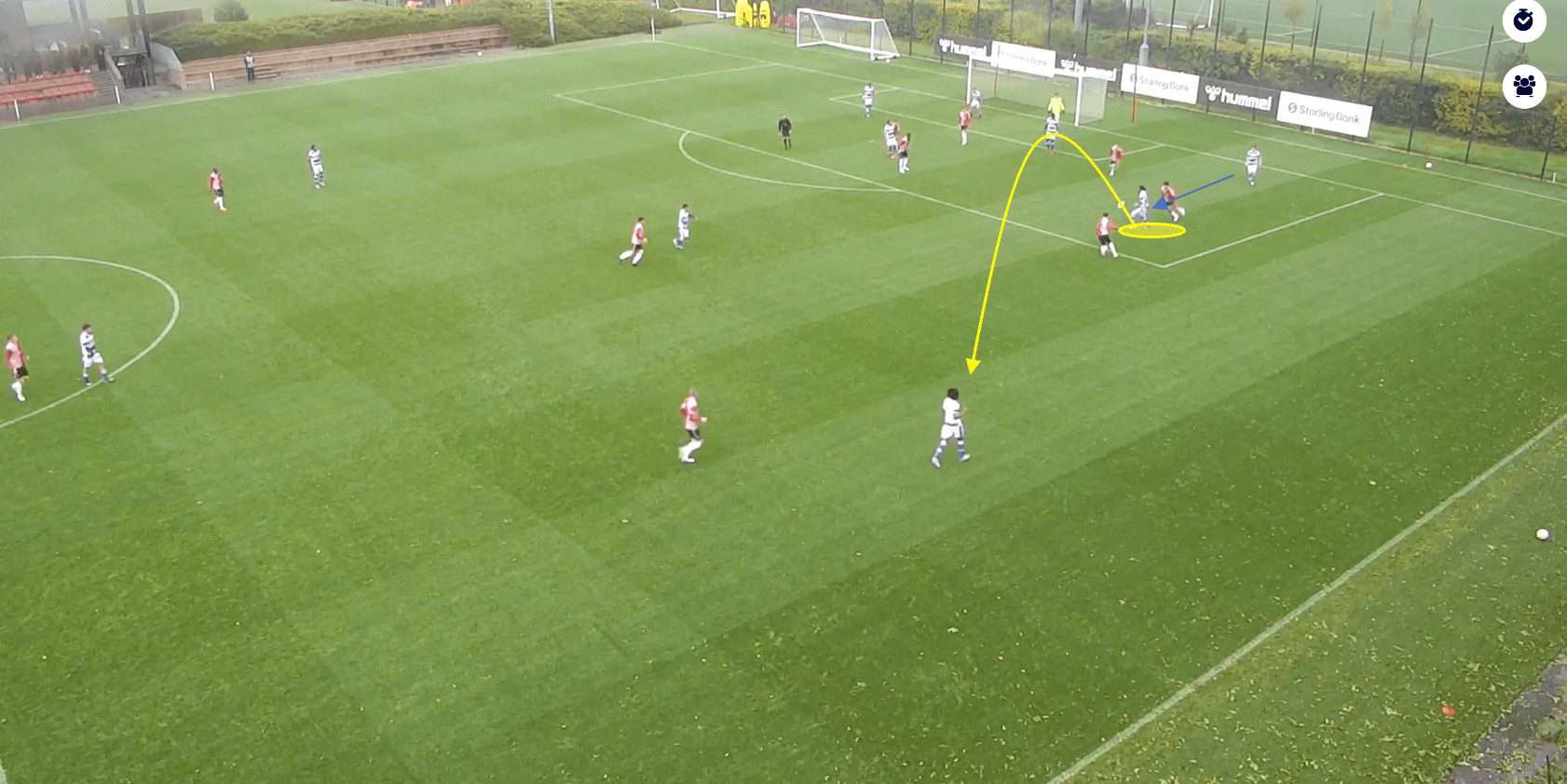
Shay Spencer offers a composed presence on the ball as a reliable outlet in tight situations.
When faced with pressing opponents, the ability to maintain composure ensures that he can receive passes under pressure whilst mitigating the risk of turnovers in critical areas of the pitch.
This composure forms the foundation for Reading’s possession retention strategy, allowing Spencer to navigate through tight spaces and initiate controlled build-up play from deep positions.
In this scenario, Spencer’s teammate actually puts him under pressure as he passes him the ball with two opponents waiting to press in the Reading penalty area.
This does not faze the young midfielder one bit.
He lofts the ball over the opposition player and into the path of his teammate, who has time to turn and carry the ball upfield.
Spencer’s calmness and composure are vital in situations such as this.
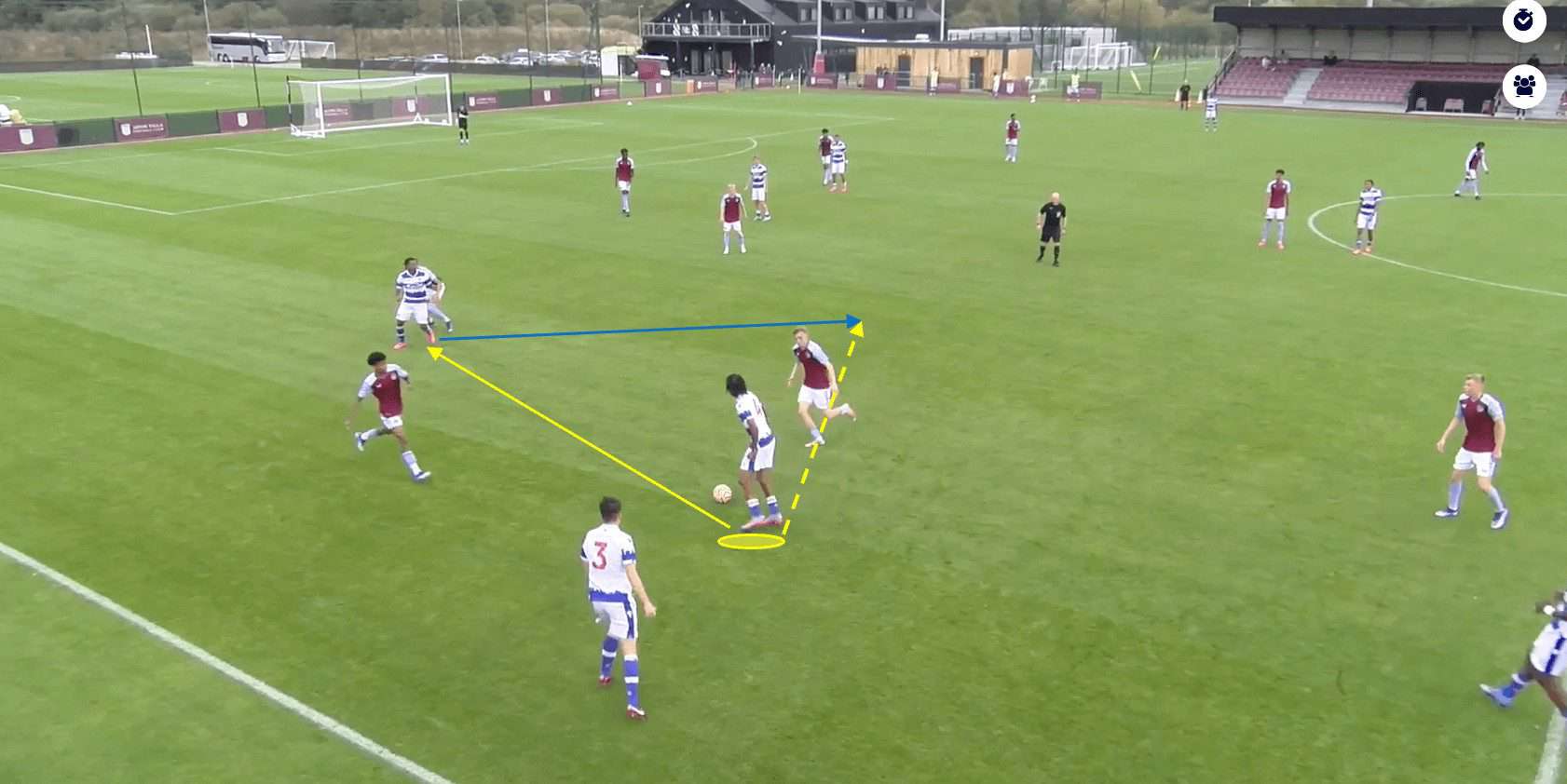
Furthermore, the young midfielder’s composure on the ball extends to Reading’s build-up play.
He can link up incredibly well with teammates and often plays intelligent one-twos, which typically bypass a couple of opposition players.
In this instance, he plays a give-and-go with his teammate, which allows him to skip beyond the two opposition players who are looking to press him.
This simultaneously creates space for Spencer to carry the ball, progressing the Reading attack further up the field.
The execution of quick ball movement and dynamic play means the Reading midfielder can rapidly advance the ball through the opposition’s defensive lines.
This quick interchange not only confounds defenders but also enables the team to progress efficiently, exploiting spaces and creating openings for goal-scoring opportunities.
Intelligent link-up play is also crucial for breaking down stubborn defensive setups.
Spencer’s excellent ability to link up with teammates can navigate through tight spaces, drawing defenders out of position and creating channels for penetrating passes.
This ability becomes particularly significant in crowded central areas, where intricate link-up play can dismantle compact defensive structures and open up avenues for progression.
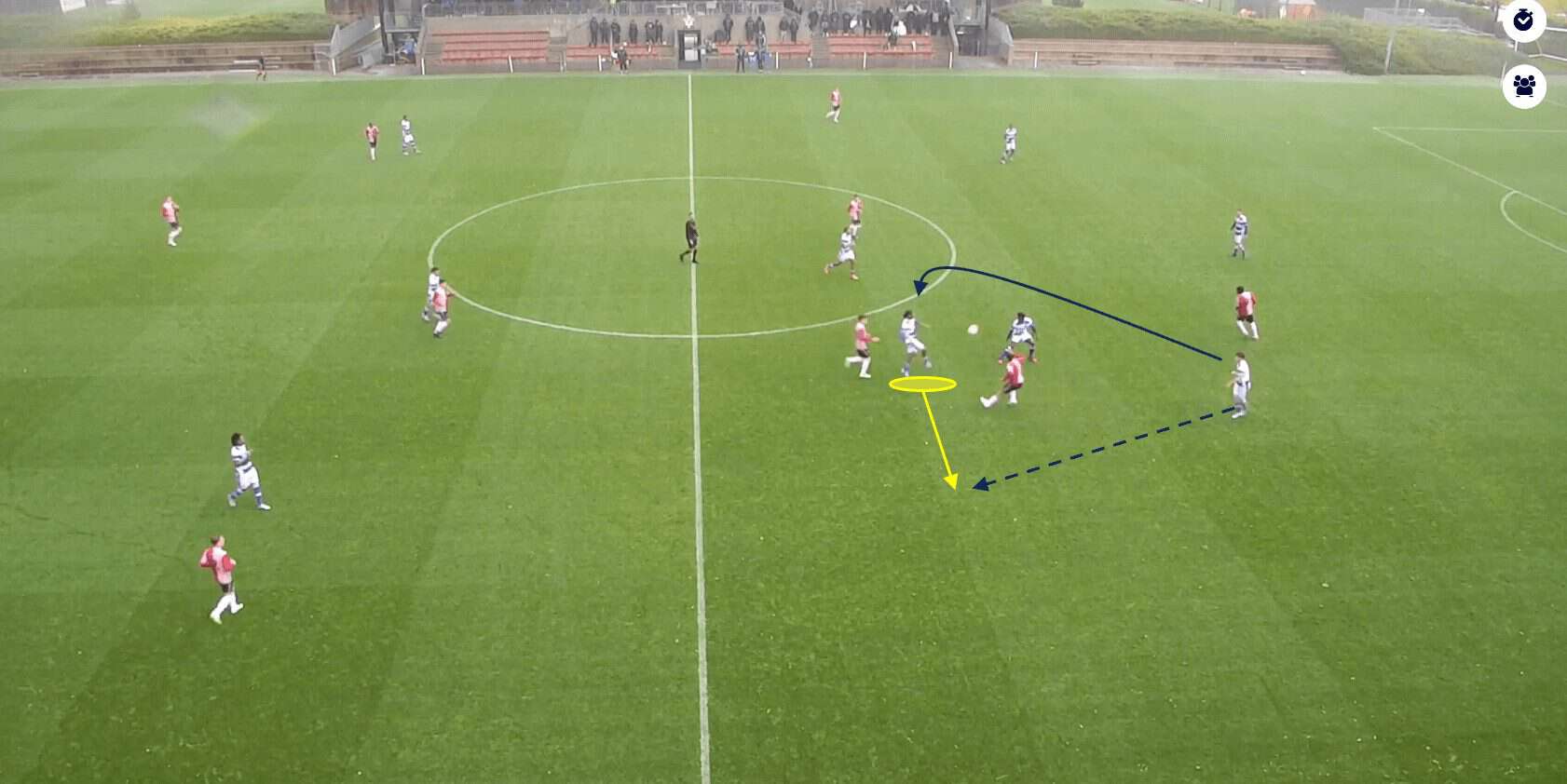
Here, Spencer links up with his teammate to allow Reading to play out of defence.
He lays the ball back into the path of his teammate, again bypassing the opposition players trying to exert pressure to regain possession high up the pitch.
By efficiently connecting with teammates, the midfielder can maintain a cohesive passing rhythm and dictate the tempo of the game.
This sustained possession not only frustrates opponents but also provides the team with greater control over the flow of play, allowing them to build up attacks and probe for defensive vulnerabilities patiently.
Shay Spencer Playing out from the back
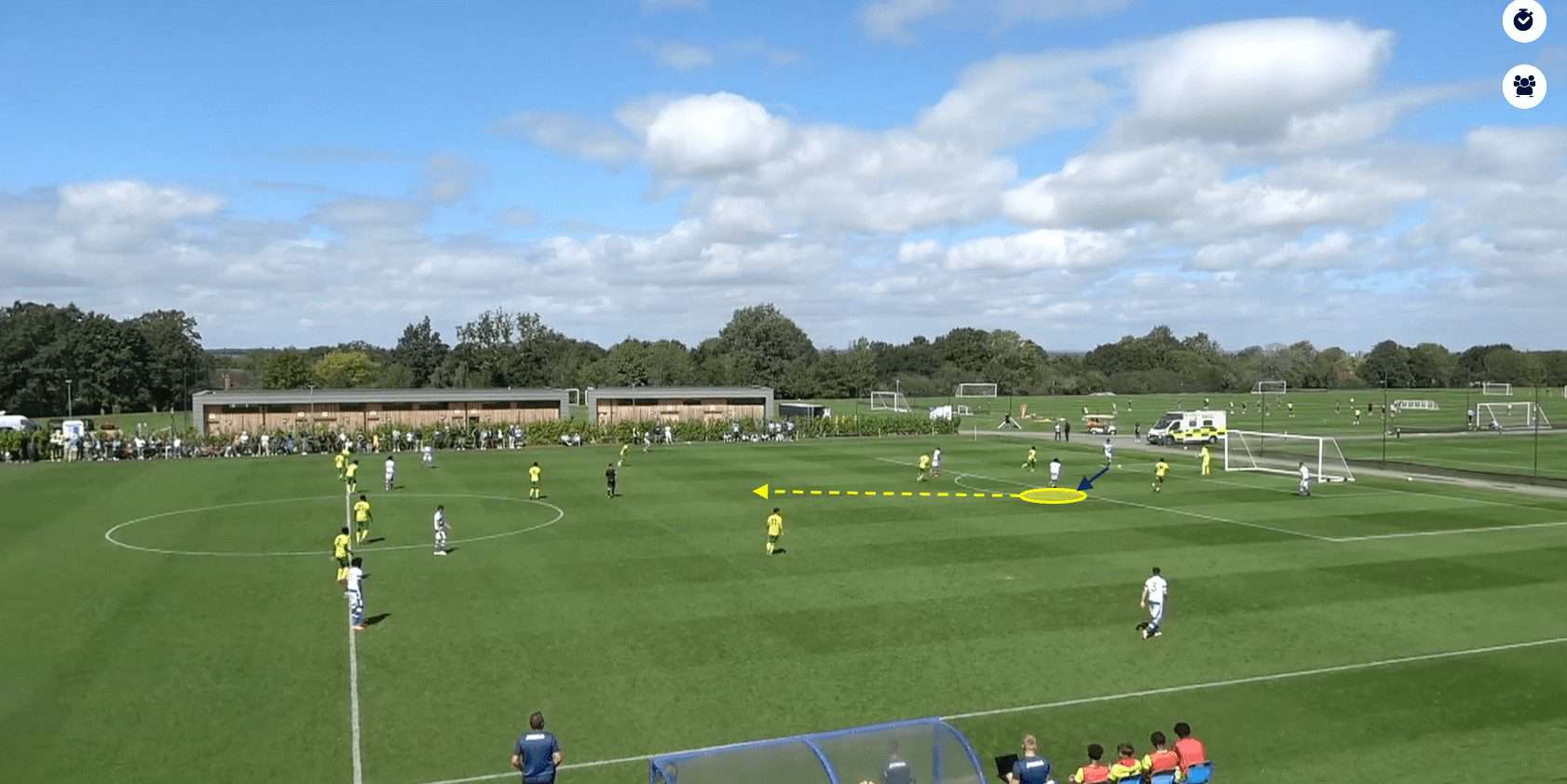
Additionally, Spencer is very adept when Reading is looking to play out from the back.
He has a pass accuracy rating of 89%, which is impressive considering this also includes long passes.
He also averages 13.2 accurate forward passes per 90 and 0.42 key passes.
In the image above, we can see that when Reading plays out from the goalkeeper, Spencer positions himself on the edge of the area.
He is comfortable receiving the ball under pressure and can shield the ball from an opponent by turning away from him with his first touch.
When he sees open space ahead of him, the midfielder will look to carry the ball and progress the play.
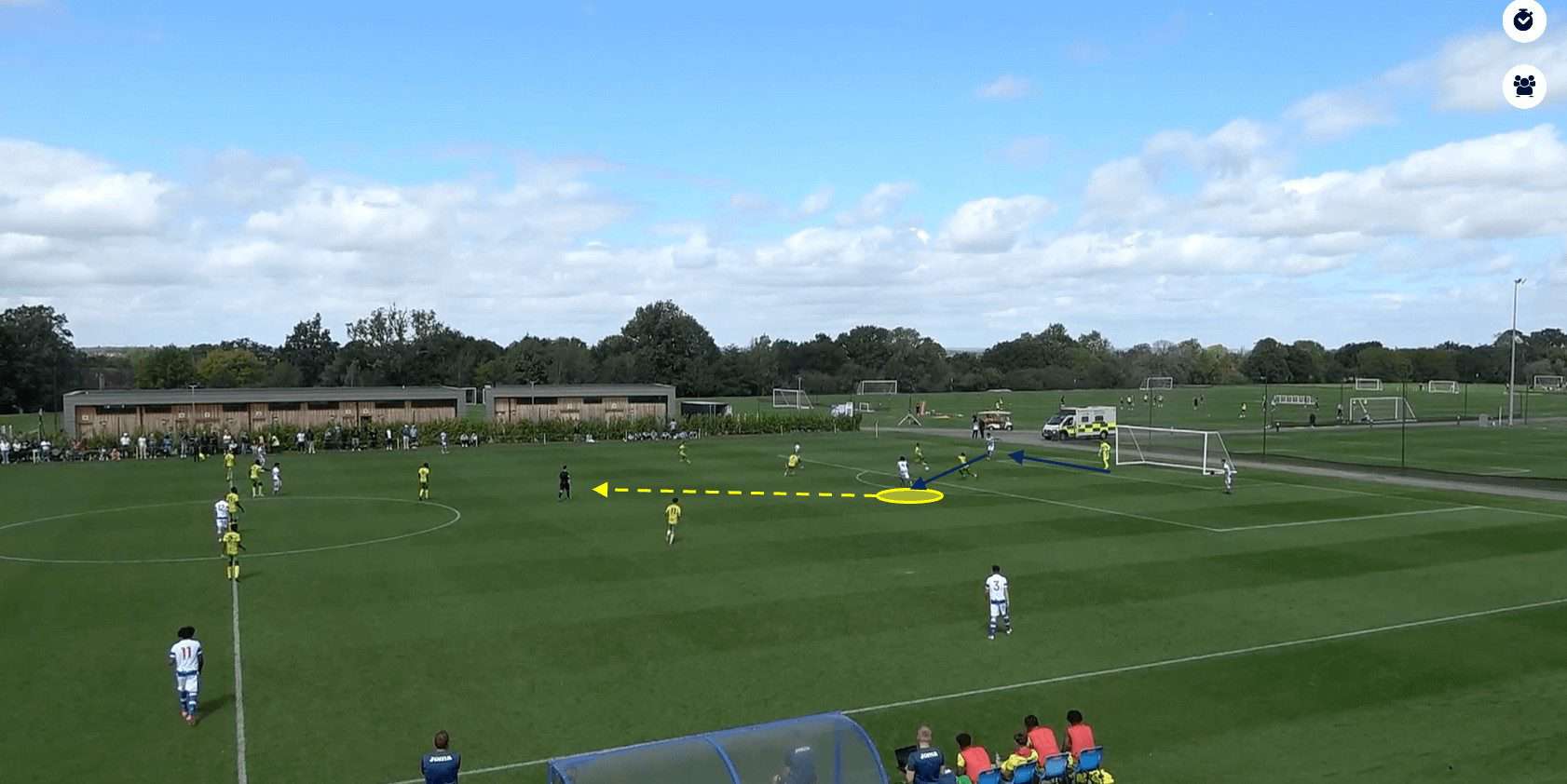
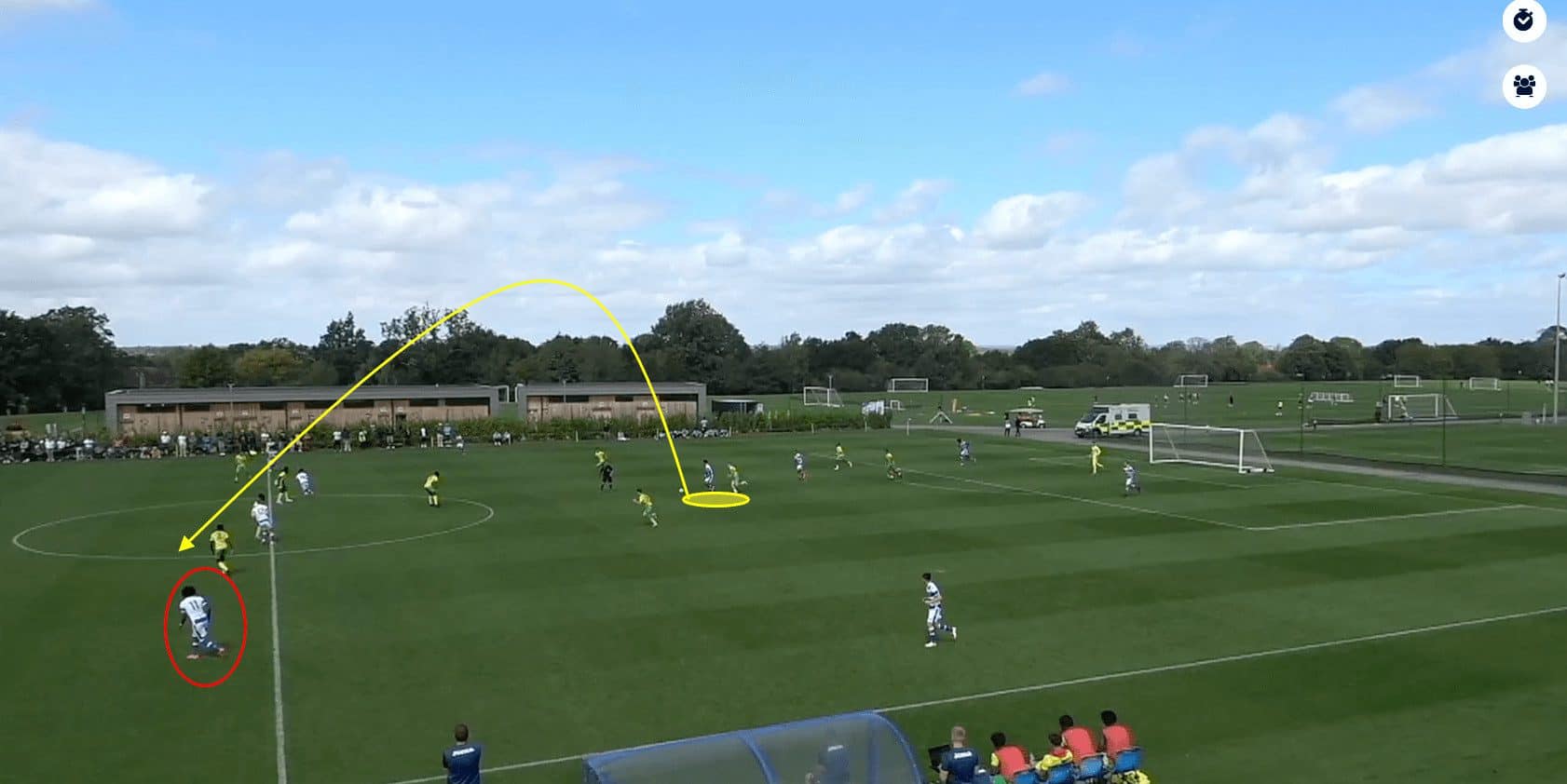
A similar scenario occurs: Reading plays out from the back, and Spencer utilises his first touch to ensure the opposition has no chance to get to the ball.
He then carries the ball out of defence and looks up.
Seeing his teammate making a run in behind the defensive line, Spencer executes an inch-perfect pass over the top of the Norwich defence.
Unfortunately, the Reading player mistimed his run and was caught offside, but it is still an excellent example of Shay Spencer’s playmaking abilities.
Shay Spencer’s composure allows him to manoeuvre effectively through the opposition press, creating openings and disrupting the opposition’s defensive posture.
This skill becomes particularly valuable during transitions from defence to attack, where the midfielder’s ability to play out quickly and accurately can catch opponents off guard, creating counterattacking opportunities.
Plus, his ability to dribble beyond his opponent is instrumental, as he averages 1.44 successful take-ons per 90.
This means he can be relied upon to carry the ball and not turnover possession as the opposition seeks to win it back.
Furthermore, he has a diverse passing repertoire, which means the young midfielder can fulfil different tactical roles within the team.
He can initiate attacks with through balls and switch play with accurate long passes.
Spencer’s passing range allows him to become the linchpin in connecting different areas of the pitch.
His adaptability enhances the team’s overall fluidity and provides the manager with tactical flexibility, allowing for strategic adjustments based on the ebb and flow of the game.
Shay Spencer Defensive stability
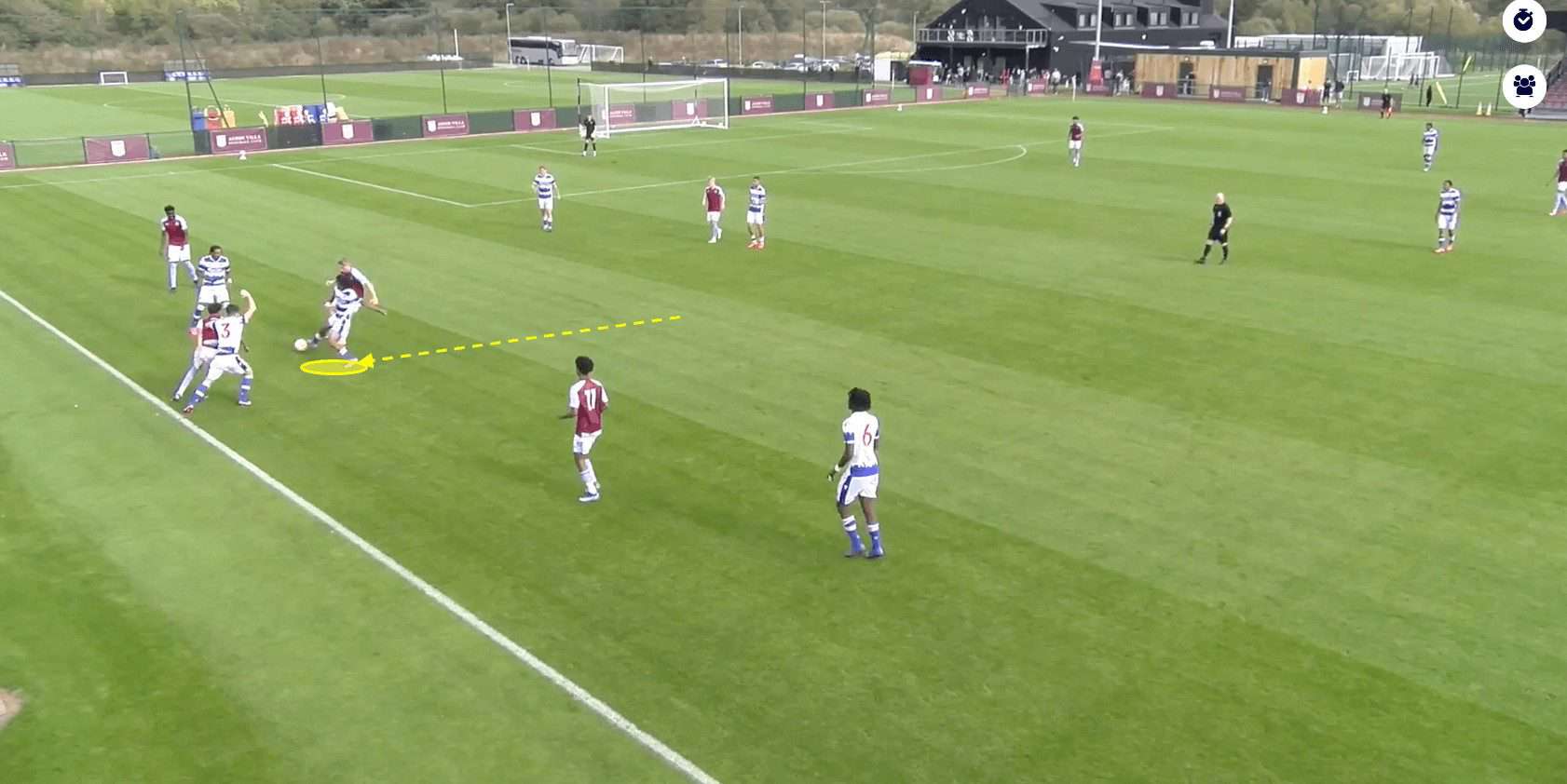
As we would expect, Shay Spencer also contributes extensively to Reading’s defensive performances.
The 17-year-old averages 2.1 ground duels per 90 and is very adept at recovering the ball in the opposition half.
This is a good example: he uses a good burst of acceleration to step in front of his opponent and cut out the pass.
Moreover, he is a very tenacious player.
He constantly presses opponents, harrying them off the ball and engaging in well-timed interceptions, which contributes to regaining possession in advanced areas such as this one.
This defensive aggression not only prevents the opposition from settling into a comfortable passing rhythm but also creates opportunities for quick and direct transitions into attacking phases that we have identified previously.
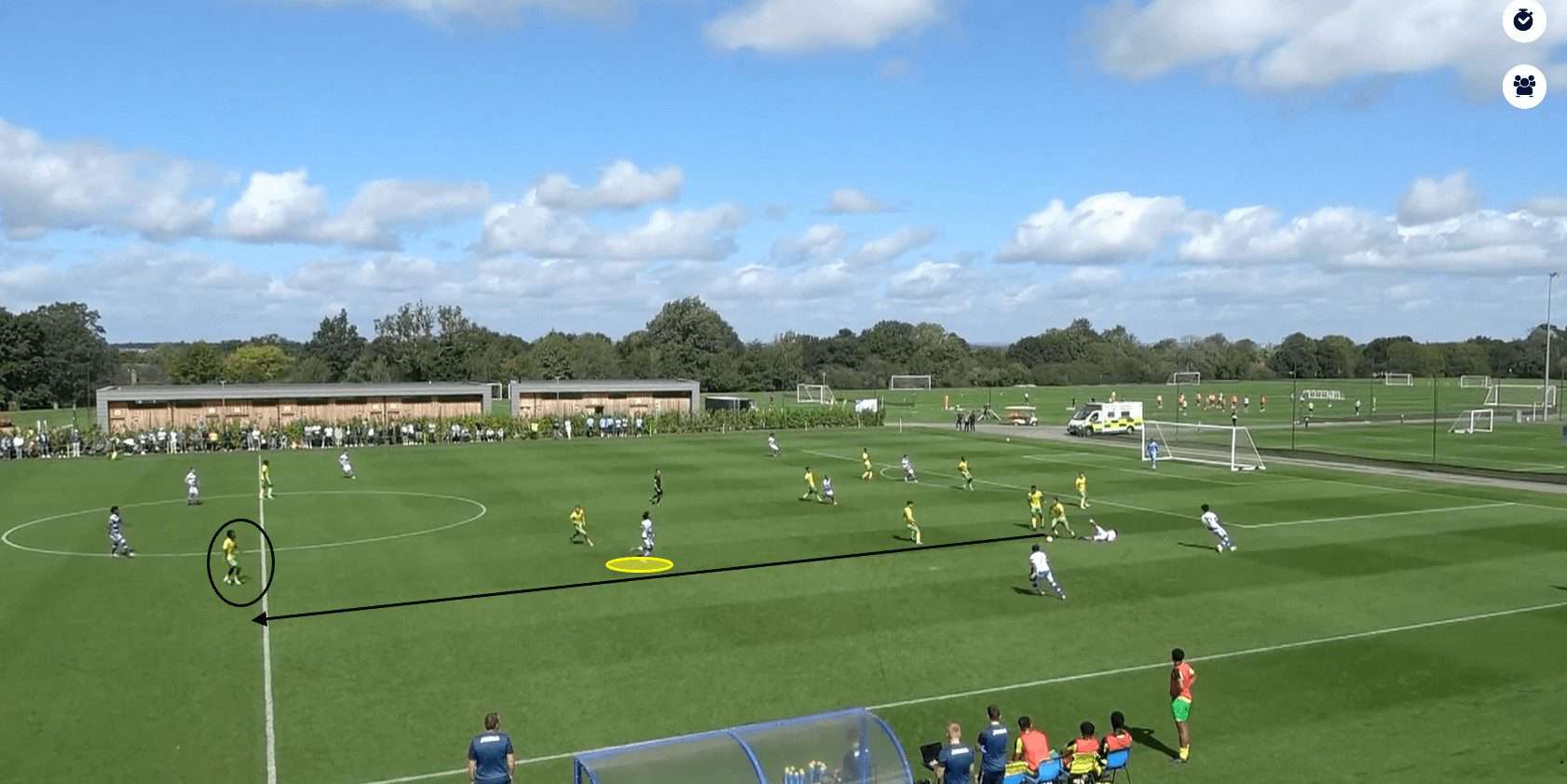
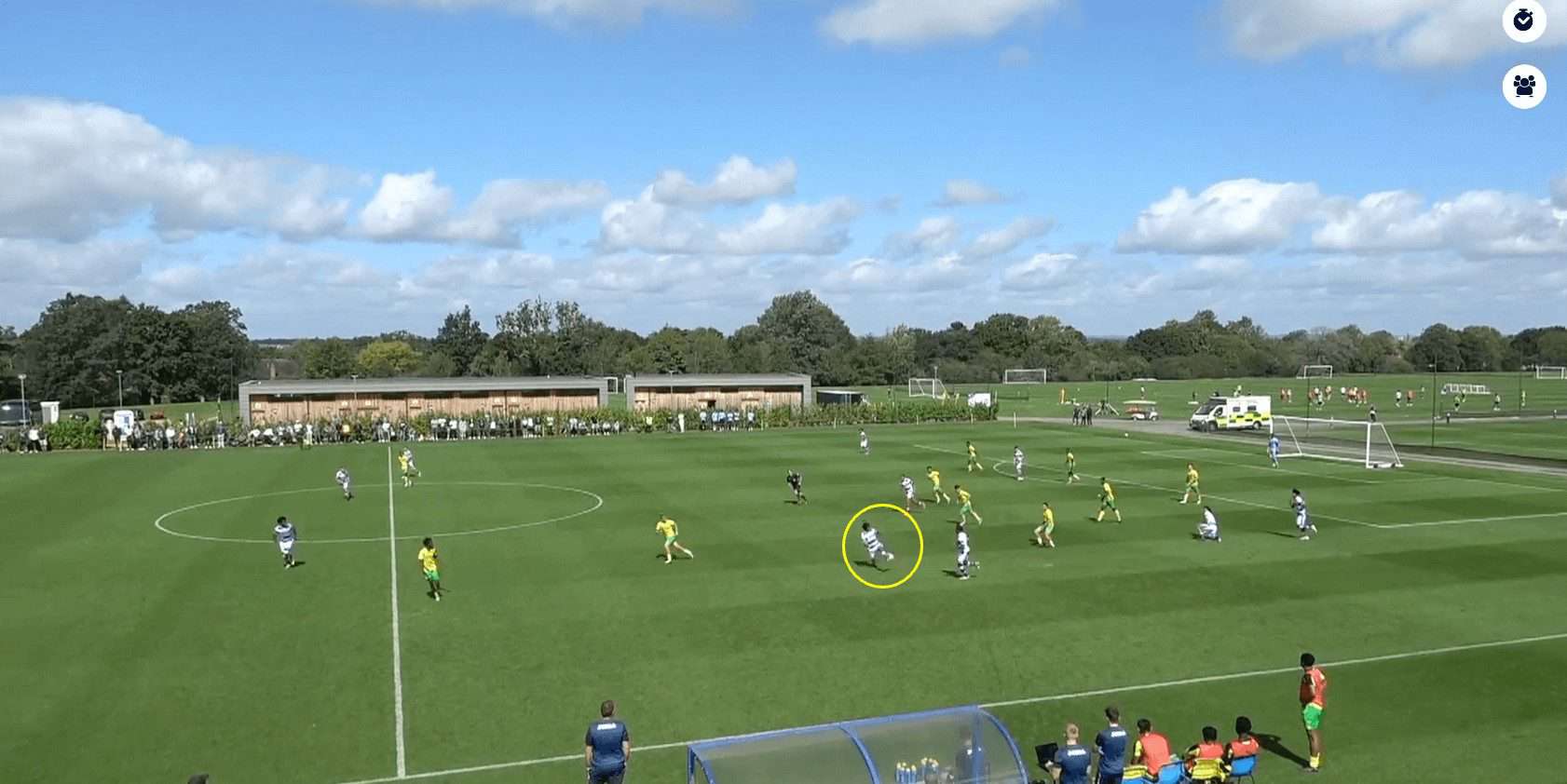
Spencer’s excellent reading of the game allows him to anticipate the opponent’s passes and make crucial interceptions.
Consequently, this halts the opposition’s attacking moves and limits their counterattacks, which occur in the images above.
As soon as Reading turnovers possession, Spencer is very aware that Norwich has the opportunity to counter.
He assesses the situation and understands that the most dangerous pass Norwich could play is straight to the attacker we have circled.
He times his movement well and successfully cuts out the pass, preventing the opposition’s counterattack and putting Reading back in control of possession.
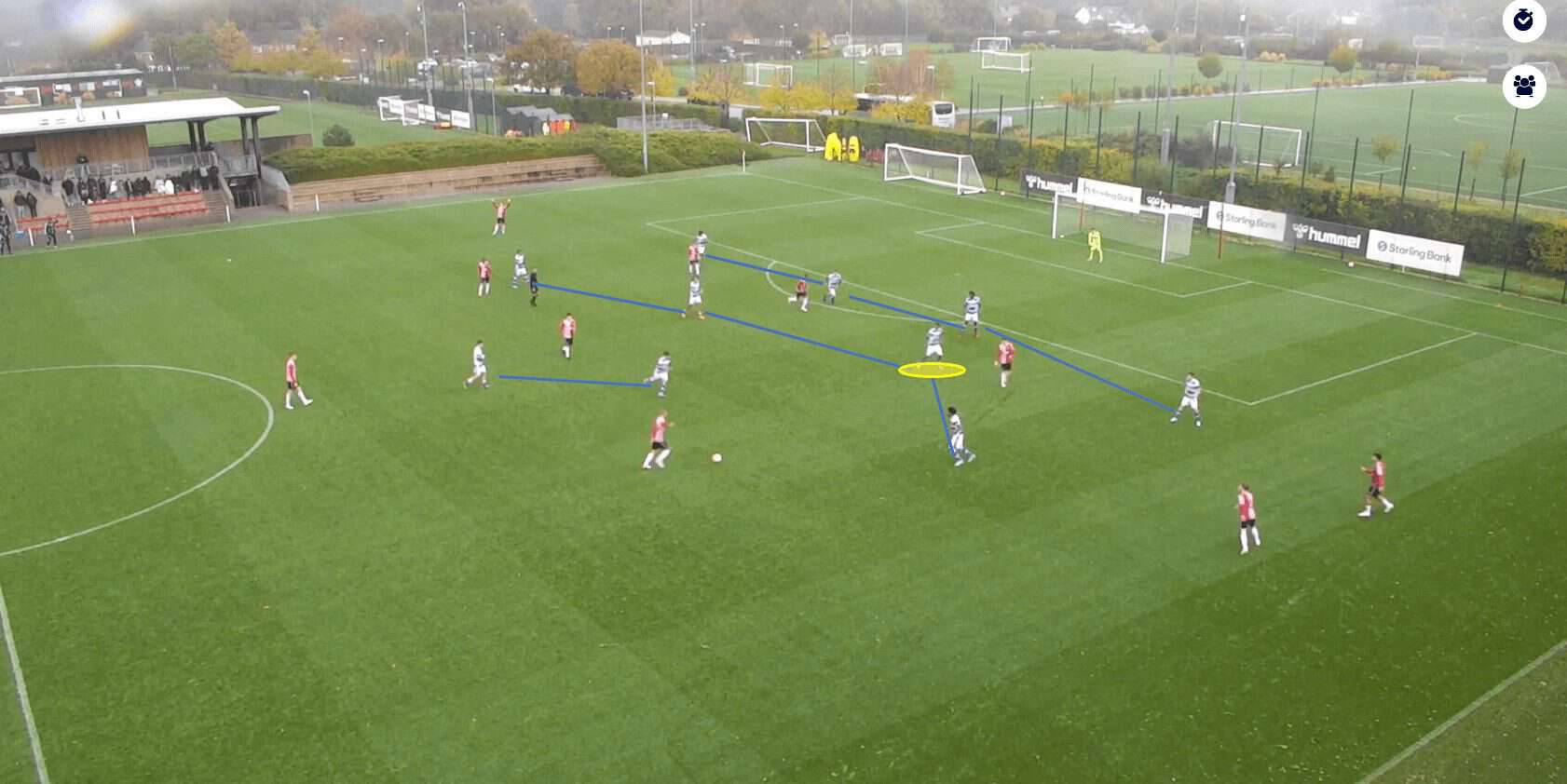
Typically, Reading U18s adopt a 4-4-2 shape in the defensive phase, looking to remain compact and prevent their opponents from playing through the lines.
Spencer plays a pivotal role in cutting off passing lanes.
This defensive responsibility is essential for thwarting opposition attacks and maintaining control in critical areas of the pitch.
Firstly, the young Reading midfielder serves as a vital shield in front of the defence, blocking incoming threats.
By positioning himself strategically, he can disrupt the flow of the opponent’s attacking moves, preventing attackers from exploiting spaces between the defensive and midfield lines.
His shielding role is crucial in minimising the risk of opposition players getting into dangerous areas and taking shots on goal.
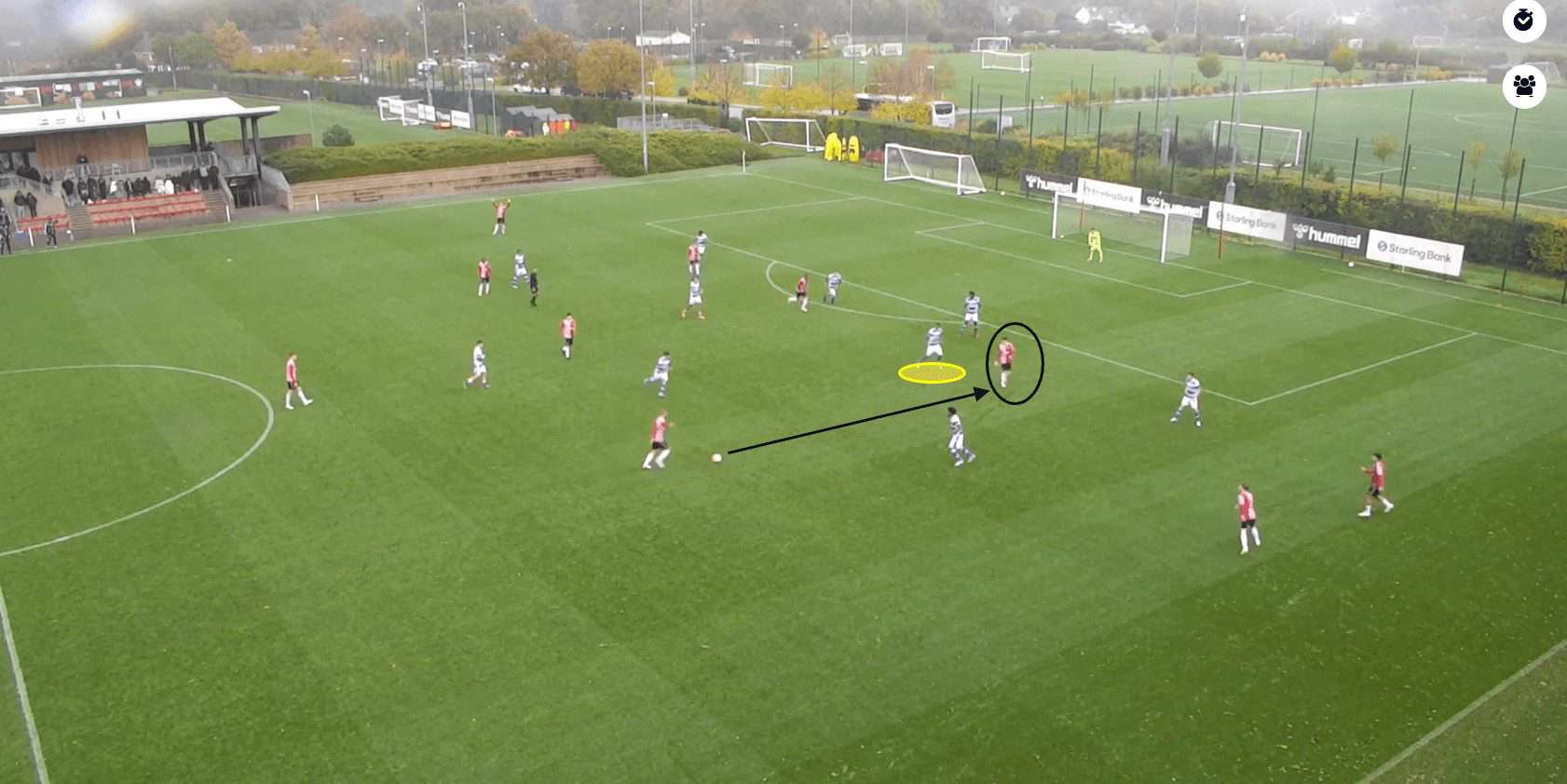
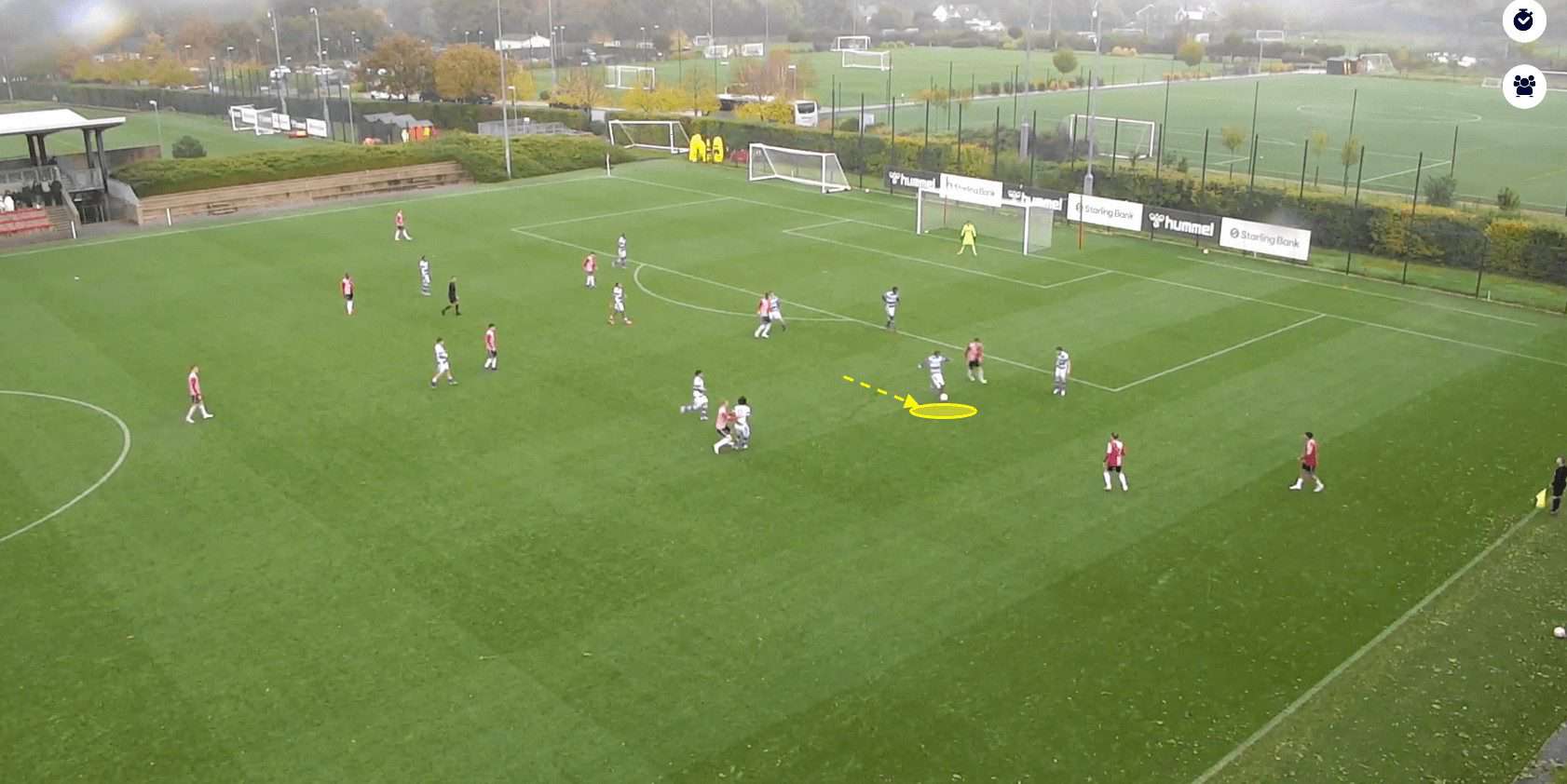
In this example, Spencer recognises where the Southampton player is going to play the ball and steps in to cut off the passing lane and make the interception.
His intelligent positioning allows him to intercept penetrating passes and deny the opposition access to critical areas.
This disrupts the rhythm of the opponent’s play and hinders their ability to create goal-scoring opportunities through intricate passing sequences.
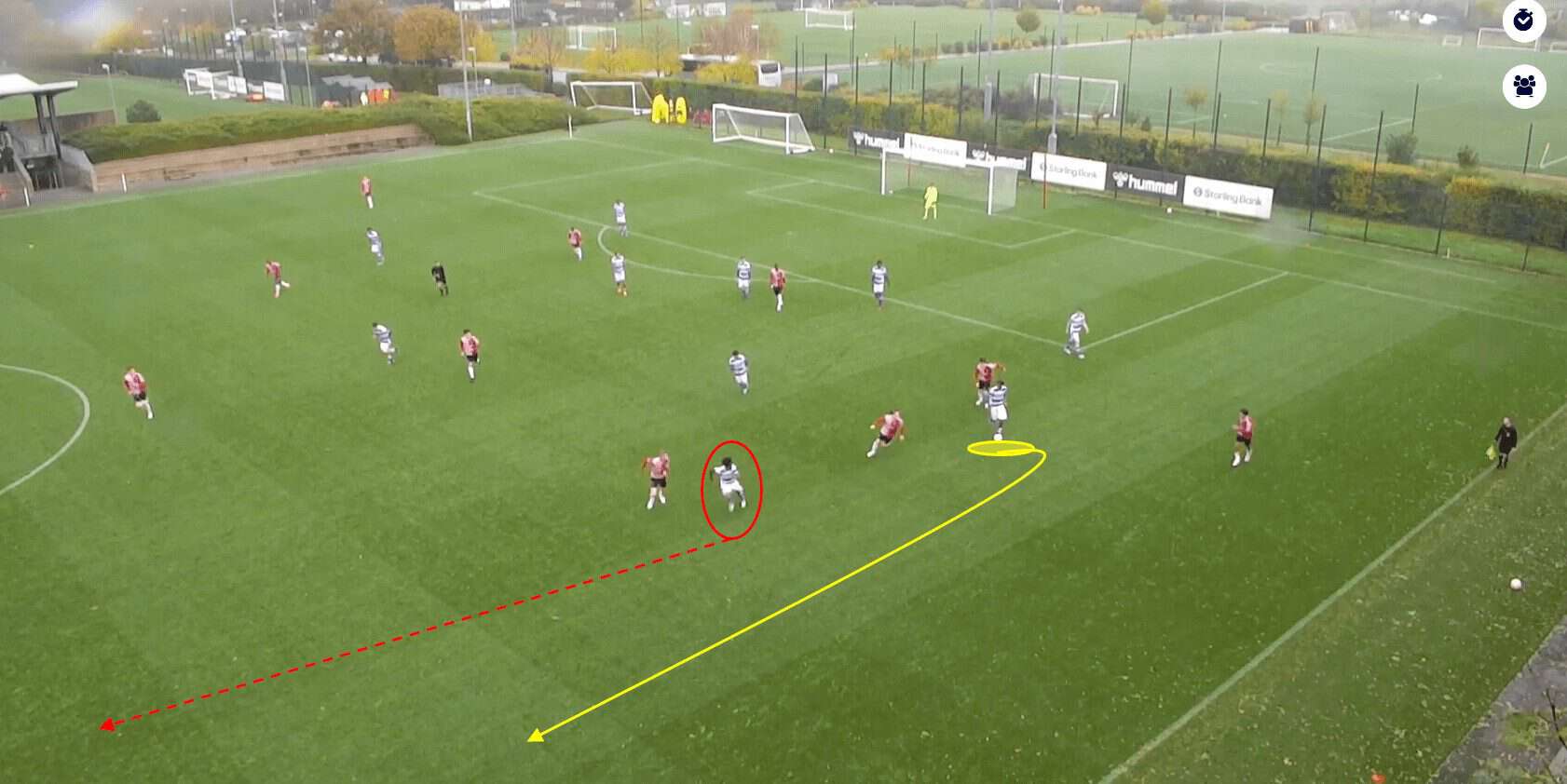
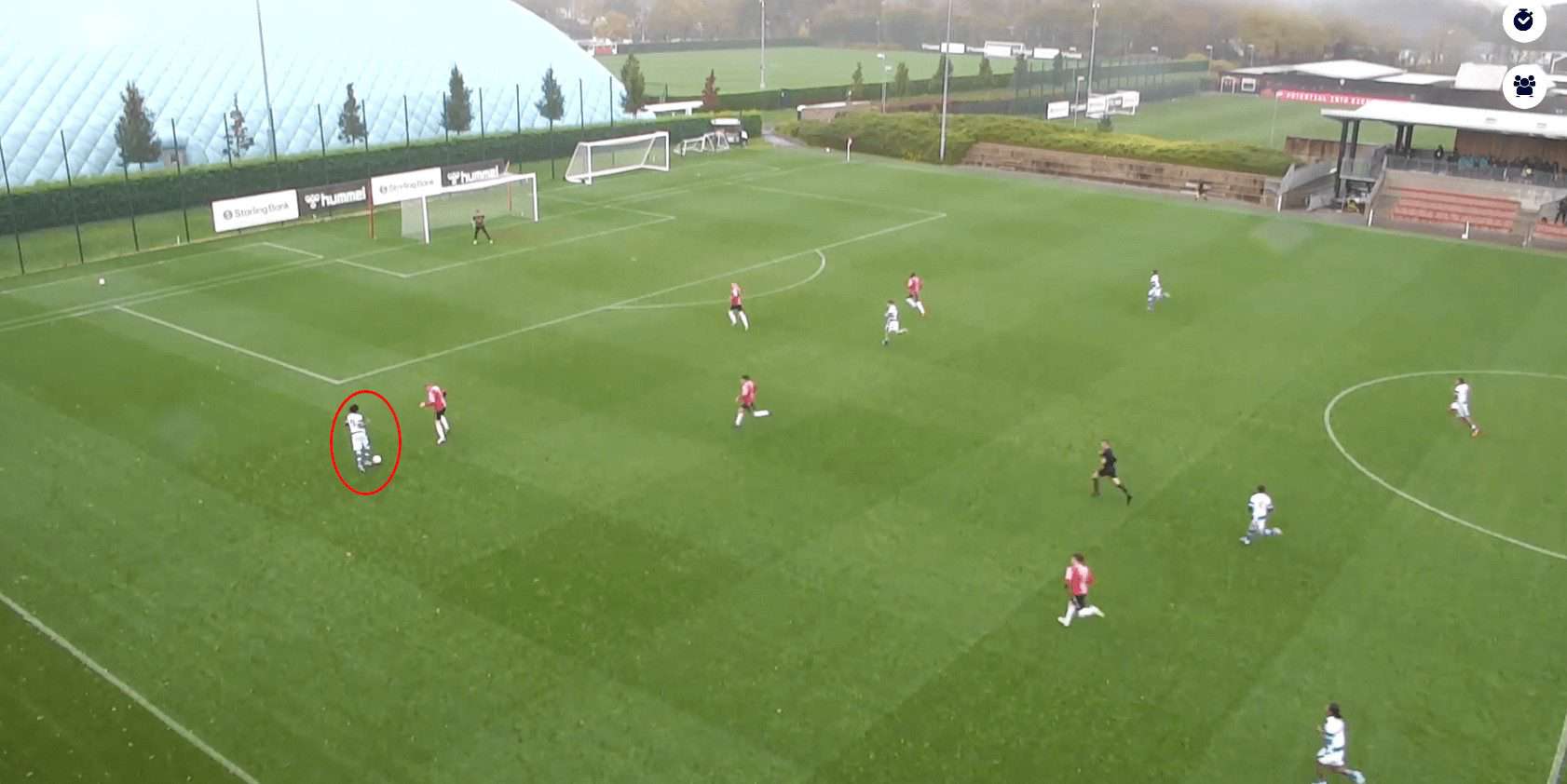
Furthermore, cutting off passing lanes means that Spencer can utilise his passing or ball-carrying abilities to quickly transition the team from the defensive to the attacking phase.
This proactive approach contributes to the team’s overall ability to control the course of the game.
As we can see from the images above, Spencer carries the ball forward upon regaining possession and plays a beautiful pass down the line for his teammate to run onto.
In the blink of an eye, the intelligent midfielder recovers the ball and transitions his team into a dangerous attack.
Conclusion
With Reading in a dire financial state and relegation a possibility, rebuilding around their youth players may not be a bad idea.
Shay Spencer is undoubtedly a talented young midfielder who brings a fantastic level of intelligence to his performances on the pitch.
He brings some incredible attacking qualities to his play, including his composure on the ball and his passing abilities.
However, he does not shirk his defensive responsibilities and uses good positioning to his advantage to regain possession for Reading.
This scout report has highlighted the critical elements of Shay Spencer’s game and shown how he is capable of influencing the game for 90 minutes.
He is undoubtedly one to watch.
As a young player, he will most likely have a very bright future within the game.





Comments